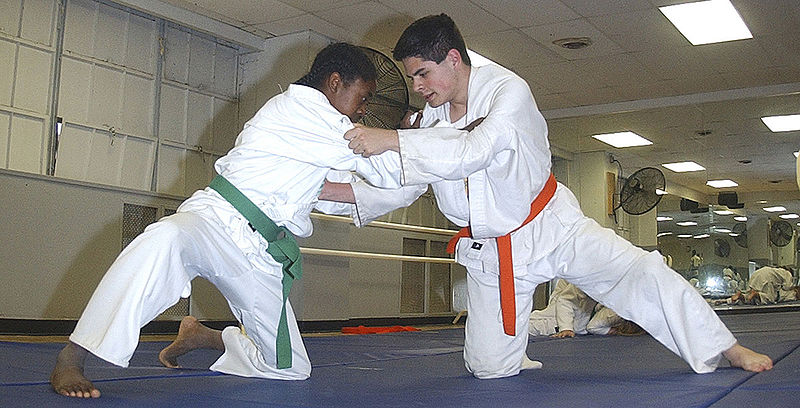Recently a Judo coach I have the pleasure of working with told me I need to “just relax” when I’m doing randori. We’d recently had a 5 minute practice together and he elaborated that I needed to take it easy a little on the grips. I found this comment both surprising and amusing at the same time.

I made this same comment to a less experienced club member a month previously! I found that he’d fight hard to get a good grip and then muscle down to secure that grip NO MATTER WHAT THE COST. What then entailed was a reduction in options for him because his hands, wrists and arms were stuck in this solid position with nothing gained (other than a grip). For the receiver (ie. me) this meant opportunity to view the landscape and make some very educated guesses on where the action would go next and plan ahead. Irony of ironies, I told this person to relax their grip so they can open up more movement for themselves.
How experience changes us
I’m currently reading a fascinating book on Mastery by Robert Greene which deep-dives into what mastery in any given field entails (bear with me as it’s relevant!). The author dedicates a chapter to describing how a significant amount of experience in a chosen endeavour creates a wealth of related and contextual intuition.
In the area of Judo you have a lot going on: where your arms are, your opponent’s arms, your centre of gravity, your foot location etc etc. This intuition mentioned in the book I can directly relabel it as ‘Judo IQ’ as I have mentioned in past articles.
With a little more experience you apply your attention to fewer and fewer things, since the action going down:
- is familiar
- provides you with confidence of where things are going next
- is exhausting if you’re to focus on everything happening in real time.
I bring all this up because gripping, although critical to our jacketed grappling sport, is only a part of the picture. It’s stressed a lot in any training regime your club follows. There’s even a name for it: “kumi kata” which shows how important it is.
In early training it’s almost instinctive to secure a good grip and hold on for dear life. Then muscle in for a throw and hope for the best… If you have a weight advantage and your skill is slightly better it might work, but that’s not good enough for people like us, right?
So how should we be gripping?
At the risk of taking a very abstract and spiritual direction, the gripping itself should be relaxed and unrelaxed, depending on what’s needed at the time (how very Tao of me).
To bring it to a format that we can actually find useful: You should secure a grip and use it when you can (in fact I’ve heard from a lot of experienced players online talking about “grip and go!!”).
Avoid…. being so relaxed that you end up with a dud grip and getting thrown.
Avoid…. being too tense that you can’t move because you’re spending too much of your attention, strength, gameplan on retaining the grip.
Be aware which grip(s) you want to secure and then initiate your choice of action. Secure it only for those few moments as you go for the throw. If you were to apply percentages:
- 50%-80% of grip strength applied as you’re feeling your opponent out and directing/misdirecting them.
- 100% as you make the throw.
All this interspersed with periods of yanking here, pushing there, all in the spirit of sending mixed messages in order to mask your intentions.
To wind this up
Have half-relaxed gripping when you’re feeling out, but grip tense when you throw. Mask what you’re doing.
I’m well aware there’s a lot more to a Judo bout and I’m performing sacrilege to not even put a passing reference to balance and wotnot but this serves just a quick summary on gripping.
I hope you find this useful – please add any comments if you agree or even vehemently disagree too!